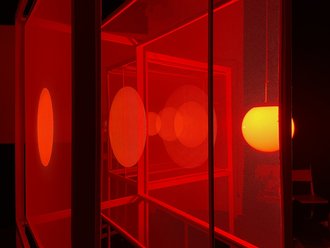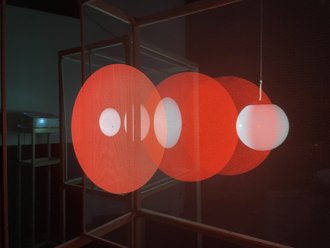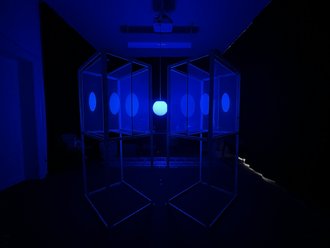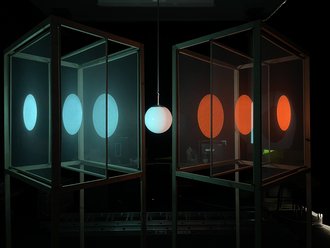Optical Footprint: an immersive experience in negative after-image
Optical Footprint is a light installation which aims to create a new artistic representation and visual experience for the after-image. It allows visitors to acquire and experience this visual phenomenon by simulating the effect. The installation itself is used for representing three approaches of the after-image, a reflection of a visual object, a medium between eye and object and the existence of the visual image. The lighting stimulates the visual experience, by utilising lighting and projection mapping as the narrative equipment of the installation. The animation projection represents the after-images that we see inside ourselves (internal image) and the lighting fixture represents the real images that we see outside (external image).
Master-Thesis WiSe 2020/21
Chanadda Janthivanont
1st examiner: Professur Darstellungsmethodik
Prof. Andreas Kästner
2nd examiner: Reinaldo Verde
Humankind mostly recognizes objects and spaces through visual perception. Seeing is a primary action for visually perceiving surroundings (disabilities are not taken into account) and followed by touching and hearing. After optically perceiving, sensory inputs of the sense organ will be received; then the intake information will be transmitted to the brain. In regu-lar cases, this process will keep running continuously when something induces the visual sensory. In gen-eral, we visually perceive things which can be seen or things we think they do exist. This question has come to my mind, do we just perceive things outside (external objects) or do we also perceive things inside ourselves (internal objects) ? However, there are some occasions that we possibly perceive things which are not publicly perceivable or things which we consider that they do not exist. Under some conditions, it can be divergently perceived in one’s sight, depending on one’s perception, experience and perspective. In a scientific approach, it is usually identified ans an ab-normal visual perception or illusion, but in an artistic approach, it can be such a magnificent visual experience, as in the case of an after-image.
This thesis attempts to entirely accomplish the initial thoughts and objectives by the optimal methodology. The aim is to explore alternative aspects of after-image then convey it through mediums. The mediums are desired to transmit the idea of after-image with such an immersive context because it is the best way to let the visitors absorb the provided experience. Additionally, the improvement of technology allows us to explore the possibility of creating artworks by utilizing various kinds of media.




